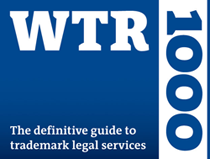The following article by Attorney Maxwell Goss was first published by Michigan Lawyers Weekly on September 15, 2021.
Protecting trade secrets in the evolving workplace
White-collar workers are switching jobs, working remotely, and holding down multiple gigs. These changes present new opportunities, but they can also put trade secrets at risk.
Nearly every business has trade secrets
Trade secrets should be a concern for almost every employer. Whether they realize it or not, most companies have trade secrets that add value to their business. When we think of trade secrets, famous examples like the recipe for Coke or the formula for WD-40 may come to mind. But trade secret law extends to almost every kind of information one can imagine.
Both technical and business information can be legally protected. Technical information may include (among other things) product formulas, software code, engineering drawings, and industrial processes. Business information may include (among other things) customer information, pricing and margin information, business plans, and market research.
Generally speaking, information may be protected as a trade secret if it gains value from not being known to a competitor and the owner has taken reasonable steps to keep it secret. Bottom line: companies of all sizes and in every industry have valuable secrets to protect.
The changing workplace brings new risks
Recent surveys show record numbers of employee departures. One survey found that 41% of employees are considering changing jobs this year. Another one found that employee resignations have already begun to spike, especially in tech and healthcare.
Meanwhile, remote work has sharply increased. In 2020, the number of employees working from home nearly doubled. A recent survey found that a large majority of professionals prefer working remotely, do not want to return to the office full-time, and expect remote work to become standard practice. Many employers are accommodating these preferences.
Some remote workers are also moonlighting without their employers’ knowledge. The Wall Street Journal reports that professionals in tech, banking, and insurance are secretly juggling projects and Zoom calls for two separate employers while collecting two salaries.
Whatever else might be said about these trends, they pose significant threats to employers’ trade secrets. Technology, for all its advantages, makes it shockingly easy to steal information. For example, it takes just moments for a departing employee to grab company files by transferring them to a USB drive or cloud storage account or forwarding them to a personal email account. Once taken, these files will often make their way to a competitor.
Misappropriation can be even easier in a remote work setting, where there is no in-person monitoring and where employees—with or without approval—may be more likely to use personal devices. Remote work can also be more vulnerable to cyberattack. And working two remote jobs concurrently can create big temptations for improper sharing of information.
Strategies for protecting trade secrets
These threats make it imperative for businesses to revisit and strengthen their trade secret practices. Here are five proven strategies that employers should consider:
- Conduct a trade secret audit to identify key assets and evaluate existing protections. In light of recent developments, every company should make doubly sure it knows what assets it has, how they are protected, and what gaps in its protections need to be filled.
- Develop and follow strong, up-to-date cybersecurity protocols. Even companies with detailed protocols should revisit them to ensure they appropriately address remote work.
- Implement employee policies governing access to company information and the use of personal devices and accounts. Policies should provide clear guidelines for when, how, and why information is accessed and provide a basis for documenting any breaches.
- Require employees with access to trade secrets to sign non-disclosure agreements and, where appropriate, carefully drafted non-compete or non-solicit agreements. Written agreements can greatly enhance a company’s ability to obtain relief for violations.
- Conduct exit interviews with departing employees. Exit interviews provide an occasion to remind an employee of his or her post-termination obligations and an opportunity to gather facts about potential risks surrounding the employee’s departure.
This list is by no means exhaustive, but it can provide a useful starting point for any company.
Be proactive
Getting one’s trade secret house in order will have immediate benefits. A solid trade secret protection program will promote a workplace culture that values information and will help prevent some of a company’s most valuable assets from walking out the door.
Equally important, in the event legal action should ever become necessary, the court will require an employer to show that it took reasonable measures to protect its information. Otherwise, the court may conclude that the information does not deserve legal protection. In other words, when it comes to trade secrets, courts help those who help themselves.
Finally, when trade secret misappropriation is discovered or suspected, the clock is ticking. The impact can be swift and devastating, and evidence may evaporate quickly. The matter should be investigated promptly. If legal action is needed, it usually should be taken without delay.








